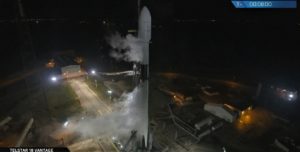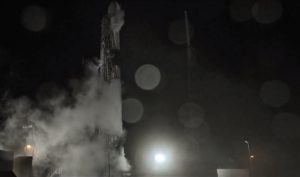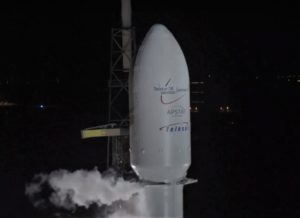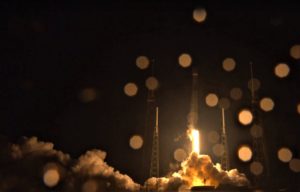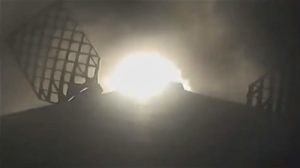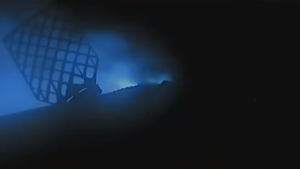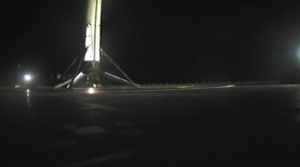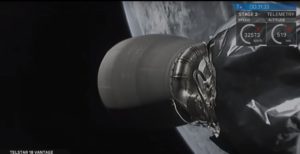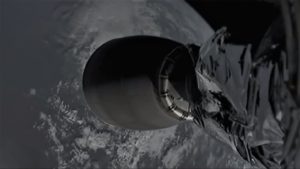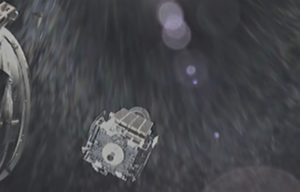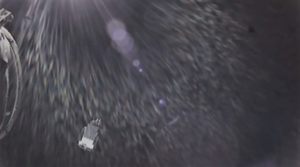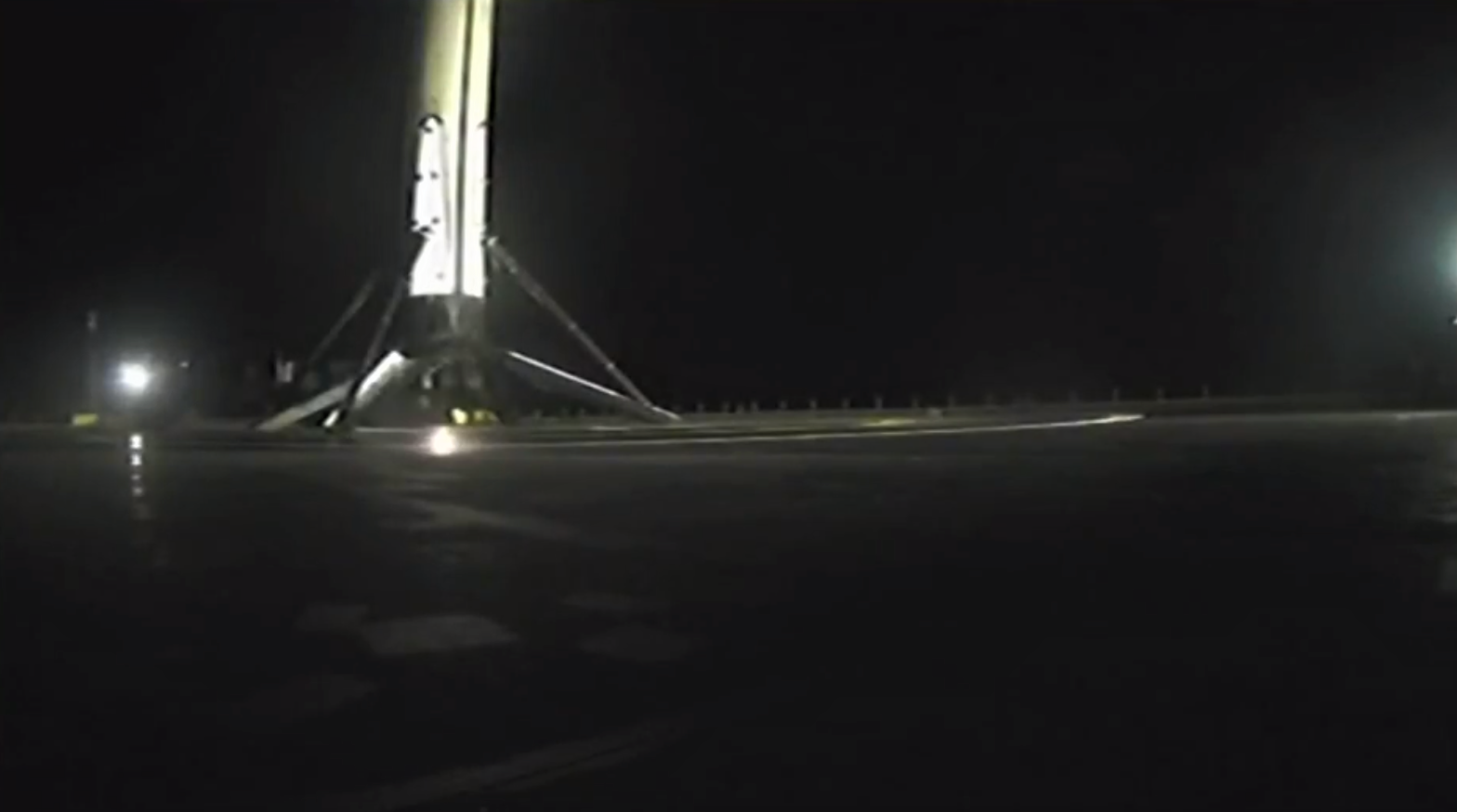
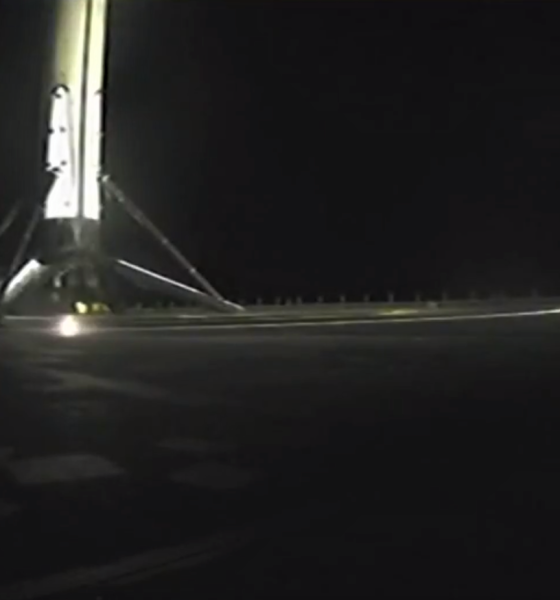
SpaceX
SpaceX bags 60th successful Falcon 9 launch eight years after rocket’s debut
Following the successful separation of the ~7 metric ton satellite Telstar 18V after a nominal orbit insertion, SpaceX’s venerable Falcon 9 rocket can now lay claim to a full 60 successful orbital missions completed over the course of its relatively brief eight-year career as a commercial launch vehicle.
Telstar 18V – the second heaviest commercial satellite ever launched into orbit – is now free to make its way into a final geostationary orbit ~35,800 km (~22,250 mi) above Earth’s surface, where it will serve the Eastern Hemisphere with a variety of communications services, ranging from TV to internet.
https://twitter.com/_TomCross_/status/1039020007987077121
After Falcon 9’s upper stage separated from the first stage and pushed onwards to a low Earth parking orbit, Falcon 9 Block 5 booster B1049 flipped around using an array of powerful cold-gas nitrogen thrusters and arced towards a now-routine drone ship landing roughly 700 kilometers off the Florida coast, breaking the satellite communications link as per usual before appearing aboard Of Course I Still Love You.
With Hurricane Florence nipping at the drone ship and its entourage’s heels, SpaceX will likely try to quickly usher the Falcon 9 booster back to Port Canaveral, where it will be offloaded, brought horizontal, and transported to a local facility for refurbishment ahead of its next flight, hopefully the first of many to come. Falcon 9 Block 5 has been designed – nominally – for rapid and extensive reusability, perhaps up to 100 flights per booster with routine maintenance (10 flights with minimal refurbishment) and turnaround as rapid as 24 hours for the same core. While it appears that there may be a significant amount of work left before those aspirational figures can be made real, Block 5 is clearly a major step forward for the Falcon 9 family and includes – aside from reusability – upgrades that will enable the rocket to launch NASA astronauts aboard Crew Dragon with extreme reliability.
- Falcon 9 B1049 and Telstar 18V. (SpaceX)
- Falcon 9 B1049 and Telstar 18V. (SpaceX)
- Falcon 9 B1049 and Telstar 18V. (SpaceX)
- Liftoff! (SpaceX)
- Falcon 9 B1049 completes its reentry burn. (SpaceX)
- Falcon 9 B1049 completes its reentry burn. (SpaceX)
- B1049 stands proud after a successful landing aboard drone ship OCISLY. (SpaceX)
- Falcon 9’s upper stage seen in orbit shortly after launch. (SpaceX)
- Falcon 9’s upper stage seen in orbit shortly after launch. (SpaceX)
- The 7060 kg Telstar 18V drifts gracefully away from Falcon 9 S2 into orbital glare. (SpaceX)
- The 7060 kg Telstar 18V drifts gracefully away from Falcon 9 S2 into orbital glare. (SpaceX)
- (Tom Cross)
Compared alongside almost all other modern rockets, Falcon 9 is exceptional for the sheer speed with which it has burst onto the commercial launch scene, with Boeing’s nearly-retired Delta II family of rockets the only vehicle to hold a candle to Falcon 9 in terms of competitive advantage. Delta II, which debuted in 1989, managed a thoroughly impressive seven launches in its first year of operations and a full 55 launches (53 successes, 1 partial failure, 1 total failure).
With one partial in-flight failure (a secondary payload loss during CRS-1), one total in-flight failure (CRS-7), and one on-pad failure (Amos-6), Falcon 9 is truly comparable with Delta II, although Boeing’s expendable launch vehicle has, of course, remained permanently expendable, and relied almost unilaterally upon the US government for all but a small handful of its first several dozen launches. SpaceX’s Telstar 18V success is just one of many examples of this difference of interest in commercial competition, and a full 12 of the 16 missions SpaceX has now launched in 2018 flew commercial satellites and were awarded to the launch company on a competitive basis.
https://twitter.com/_TomCross_/status/1039031282339127297
Up next for SpaceX is Argentinian Earth observation satellite SAOCOM-1A, scheduled to launch from California’s Vandenberg Air Force Base atop a flight-proven Falcon 9 Block 5 booster no earlier than October 7th.
For prompt updates, on-the-ground perspectives, and unique glimpses of SpaceX’s rocket recovery fleet check out our brand new LaunchPad and LandingZone newsletters!

Investor's Corner
SpaceX IPO is coming, CEO Elon Musk confirms
However, it appears Musk is ready for SpaceX to go public, as Ars Technica Senior Space Editor Eric Berger wrote an op-ed that indicated he thought SpaceX would go public soon. Musk replied, basically confirming it.

Elon Musk confirmed through a post on X that a SpaceX initial public offering (IPO) is on the way after hinting at it several times earlier this year.
It also comes one day after Bloomberg reported that SpaceX was aiming for a valuation of $1.5 trillion, adding that it wanted to raise $30 billion.
Musk has been transparent for most of the year that he wanted to try to figure out a way to get Tesla shareholders to invest in SpaceX, giving them access to the stock.
He has also recognized the issues of having a public stock, like litigation exposure, quarterly reporting pressures, and other inconveniences.
However, it appears Musk is ready for SpaceX to go public, as Ars Technica Senior Space Editor Eric Berger wrote an op-ed that indicated he thought SpaceX would go public soon.
Musk replied, basically confirming it:
As usual, Eric is accurate
— Elon Musk (@elonmusk) December 10, 2025
Berger believes the IPO would help support the need for $30 billion or more in capital needed to fund AI integration projects, such as space-based data centers and lunar satellite factories. Musk confirmed recently that SpaceX “will be doing” data centers in orbit.
AI appears to be a “key part” of SpaceX getting to Musk, Berger also wrote. When writing about whether or not Optimus is a viable project and product for the company, he says that none of that matters. Musk thinks it is, and that’s all that matters.
It seems like Musk has certainly mulled something this big for a very long time, and the idea of taking SpaceX public is not just likely; it is necessary for the company to get to Mars.
The details of when SpaceX will finally hit that public status are not known. Many of the reports that came out over the past few days indicate it would happen in 2026, so sooner rather than later.
But there are a lot of things on Musk’s plate early next year, especially with Cybercab production, the potential launch of Unsupervised Full Self-Driving, and the Roadster unveiling, all planned for Q1.
News
SpaceX reportedly mulling IPO, eyeing largest of all time: report
“I do want to try to figure out some way for Tesla shareholders to participate in SpaceX. I’ve been giving a lot of thought to how to give people access to SpaceX stock,” Musk said.

SpaceX is reportedly mulling an initial public offering, eyeing what would be the largest valuation at the time of availability of all time, a new report from Bloomberg said on Tuesday.
It is one of many reports involving one of Elon Musk’s companies and a massive market move, as this is not the first time we have seen reports of an IPO by SpaceX. Musk himself has also dispelled other reports in the past of a similar nature, including an xAI funding round.
SpaceX and Musk have yet to comment on the report. In the past, untrue reports were promptly replied to by the CEO; this has not yet gained any response, which is a good sign in terms of credibility.
However, he said just a few days ago that stories of this nature are inaccurate:
“There has been a lot of press claiming SpaceX is raising money at $800B, which is not accurate. SpaceX has been cash flow positive for many years and does periodic stock buybacks twice a year to provide liquidity for employees and investors. Valuation increments are a function of progress with Starship and Starlink and securing global direct-to-cell spectrum that greatly increases our addressable market. And one other thing that is arguably most significant by far.”
There has been a lot of press claiming @SpaceX is raising money at $800B, which is not accurate.
SpaceX has been cash flow positive for many years and does periodic stock buybacks twice a year to provide liquidity for employees and investors.
Valuation increments are a…
— Elon Musk (@elonmusk) December 6, 2025
Musk has discussed a potential IPO for SpaceX in recent months, as the November 6 shareholder meeting, as he commented on the “downsides” of having a public company, like litigation exposure, quarterly reporting pressures, and other inconveniences.
Nevertheless, Musk has also said he wants there to be a way for Tesla shareholders to get in on the action. At the meeting in early November, he said:
“I do want to try to figure out some way for Tesla shareholders to participate in SpaceX. I’ve been giving a lot of thought to how to give people access to SpaceX stock.”
Additionally, he added:
“Maybe at some point., SpaceX should become a public company despite all the downsides of being public.”
Musk has been historically reluctant to take SpaceX public, at times stating it could become a barrier to colonizing Mars. That does not mean it will not happen.
Bloomberg’s report cites multiple unidentified sources who are familiar with the matter. They indicate to the publication that SpaceX wants to go public in mid-to-late 2026, and it wants to raise $30 billion at a valuation of around $1.5 trillion.
This is not the first time SpaceX has discussed an IPO; we reported on it nine years ago. We hope it is true, as the community has spoken for a long time about having access to SpaceX stock. Legendary investor Ron Baron is one of the lucky few to be a SpaceX investor, and said it, along with Tesla, is a “lifetime investment.”
Tesla bull Ron Baron reveals $100M SpaceX investment, sees 3-5x return on TSLA
The primary driver of SpaceX’s value is Starlink, the company’s satellite internet service. Starlink contributes 60-70 percent of SpaceX’s revenue, meaning it is the primary value engine. Launch services, like Falcon 9 contracts, and the development of Starship, also play supporting roles.
News
SpaceX reaches incredible milestone with Starlink program

SpaceX reached an incredible milestone with its Starlink program with a launch last night, as the 3,000th satellite of the year was launched into low Earth orbit.
On Monday, SpaceX also achieved its 32nd flight with a single Falcon 9 rocket from NASA’s Kennedy Space Center.
The mission was Starlink 6-92, and it utilized the Falcon 9 B1067 for the 32nd time this year, the most-used Falcon booster. The flight delivered SpaceX’s 3000th Starlink satellite of the year, a massive achievement.
There were 29 Starlink satellites launched and deployed into LEO during this particular mission:
Falcon 9 launches 29 @Starlink satellites from Florida pic.twitter.com/utKrXjHzPN
— SpaceX (@SpaceX) December 9, 2025
SpaceX has a current goal of certifying its Falcon boosters for 40 missions apiece, according to Spaceflight Now.
The flight was the 350th orbital launch from the nearby SLC-40, and the 3,000 satellites that have been successfully launched this year continue to contribute to the company’s goal of having 12,000 satellites contributing to global internet coverage.
There are over five million users of Starlink, the latest data shows.
Following the launch and stage separation, the Falcon 9 booster completed its mission with a perfect landing on the ‘Just Read the Instructions’ droneship.
The mission was the 575th overall Falcon 9 launch, highlighting SpaceX’s operational tempo, which continues to be accelerated. The company averages two missions per week, and underscores CEO Elon Musk’s vision of a multi-planetary future, where reliable connectivity is crucial for remote work, education, and emergency response.
As Starlink expands and works toward that elusive and crucial 12,000 satellite goal, missions like 6-92 pave the way for innovations in telecommunications and enable more internet access to people across the globe.
With regulatory approvals in over 100 countries and millions of current subscribers, SpaceX continues to democratize space, proving that reusability is not just feasible, but it’s also revolutionary.
